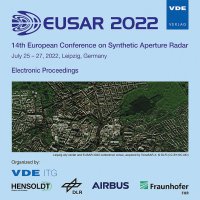Generation of Global Backscatter Maps for Future SAR Missions Design
Konferenz: EUSAR 2022 - 14th European Conference on Synthetic Aperture Radar
25.07.2022 - 27.07.2022 in Leipzig, Germany
Tagungsband: EUSAR 2022
Seiten: 6Sprache: EnglischTyp: PDF
Autoren:
Dell’Amore, Luca; Bueso-Bello, Jose-Luis; Martone, Michele; Rizzoli, Paola (Microwaves and Radar Institute, German Aerospace Center (DLR), Wessling, Germany)
Inhalt:
The generation of global backscatter maps allows for the exploitation of a priori knowledge of local synthetic aperture radar (SAR) backscatter statistics. SAR backscatter maps can be used for accurate performance prediction and for the optimization of instrument settings for present and future SAR systems. Also, many further SAR applications can benefit from the availability of backscatter maps in order to monitor the backscatter evolution in time and to investigate the radar reflectivity behaviour depending on sensor parameters and target properties. In this work, X-band backscatter maps are generated by mosaicking images acquired by the TanDEM-X (TDM) mission at global scale. The correction models used for the characterization of backscatter behaviour are based on the database provided by Ulaby in [3] and are here presented for HH polarization and for any required reference incidence angle. As an example of application for future SAR missions design, a novel performance-optimized block-adaptive quantization (PO-BAQ), coming from the need of optimizing the resource allocation of the state-of-the-art quantization algorithms for SAR systems, is then considered. The methodology relies on global backscatter statistics for the generation of bitrate maps, which can provide a helpful information for performance budget definition and for optimizing resource allocation strategies.


